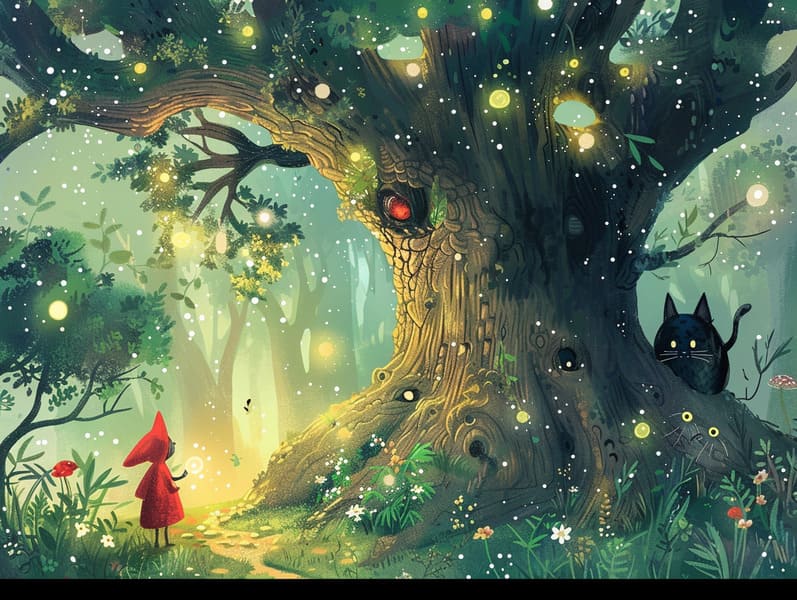The Evolution of Bedtime Fairy Tales and the Unchanging Spell.
The Evolution of Bedtime Fairy Tales and the Unchanging Spell.
Blog Article

Ancient fairy tales have ancient roots. These narratives have been whispered from one generation to the next far before they were ever inscribed. They originated from a variety of backgrounds, including Middle Eastern traditions. They were initially disseminated among elders, often carrying themes and messages pertaining to the societal norms and beliefs of the time.
The renowned Brothers Grimm, the two Grimm brothers, were among the first to compile many of these beloved tales. Their compilation, "Grimm's Children's Stories," included tales like "The Story of Cinderella," "The Story of Hansel and Gretel," and "Snow White," which have since become cornerstones in the world of traditional fairy tales. Similarly, Andersen's charming stories, such as "The Little Mermaid," and "The Duckling's Story," have captivated hearts worldwide, guaranteeing their place in the pantheon of iconic fairy tales.
Despite their historical roots, classic fairy tales remain as impactful as ever, especially as children's night stories. These fantastical tales are now available in different formats, including vibrantly illustrated books, fantastical animations, and internet fairy tales.
Their continued relevance can be attributed to several delightful features:
Valuable Lessons: Timeless fairy tales often present important moral lessons. Fairy tales like "The Boy Who Cried Wolf" teach the virtue of truth, while "The Race of the Tortoise and the Hare" illustrate the traits of tenacity and humility. These narratives offer little ones clear distinctions between virtue and vice, forming their moral compass in a subtle yet significant way.
Compassion and Insight: Timeless fairy tales frequently portray heroes facing difficulties and adversities, stimulating audiences to relate with their struggles and applaud their triumphs. For instance, "The Story of Beauty and the Beast" emphasizes the importance of looking beyond appearances to perceive the true being of a character, nurturing understanding and appreciation.
Cultural Knowledge: Many timeless fairy tales are imbued with the cultural contexts from which they originated. Exploring these tales can provide intriguing perspectives into different historical contexts, building a sense of cultural understanding and awareness.
Imagination and Innovation: The fanciful elements in ancient fairy tales—enchanted lands—enliven children’s dreaming abilities. These stories bring readers to extraordinary realms, kindling inventive dreams and a sense of wonder that stays a lifetime.
Ancient fairy tales are not only whimsical but also didactic. They provide charming tools in cultivating various thinking and feeling skills in young readers. When fairy tales are narrated, they enhance speaking abilities by offering new phrases and intricate sentence structures. This practice also promotes auditory perception and mental focus, as young ones focus on every detail, anticipating to see what happens next.
Furthermore, conversing about the themes and characters of fairy tales can strengthen evaluative skills and critical thinking. Children are taught to discern patterns, forecast, and know cause and effect. These deliberations also help the young reveal their thoughts and feelings, fostering their emotional intelligence.
In today’s modern era, the existence of digital storybooks has made these fairy tales more acquirable than ever. Digital sites and applications present ample collections of ancient fairy tales that can be looked at or listened through anytime, anywhere. Fairy tales told out loud are particularly popular, making available an delightful method for these guys children to immerse in these magical stories. Audio stories and narrated videos take characters and settings to life, often accompanied by enchanting melodies and instrumentals that augment the tale experience.
The timeless appeal of ancient fairy tales lies in their ability to shift to the present while maintaining their core values. Contemporary takes of these narratives often incorporate more inclusive characters and modern settings, making them familiar to today’s audience. However, the essential messages of valour, empathy, and fair-mindedness remain unchanged, continuing to appeal to kids of all ages.
Ancient fairy tales also offer a sense of coziness and comprehensibility. They offer a well-structured narrative with a definite beginning, middle, and end, often winding up with the conclusion of conflicts and the triumph of virtue over vice. This uniformity can be reassuring for young ones, making available a sense of steadfastness in an constantly changing world.
Timeless fairy tales continue to enchant and teach new generations, maintaining their allure and pertinence in modern society. As kids' bedtime tales, they allow a perfect blend of wonder and wisdom, cultivating moral values, empathy, and creativity. The existence of internet fairy tales and the sought after status of fairy tales told out loud ensure that these old tales remain available to new generations.
By upholding and imparting these fairy tales, we continue to laud the rich tapestry of lore and cultural heritage. Whether you are browsing a vibrantly illustrated book, perusing a internet collection, or listening to an spoken story, the wonder of Grimm's fairy tales is always within reach. These tales demonstrate of the continued force of stories and its ability to unite us across eras and regions.
Regardless if you are reading a vibrantly illustrated book, perusing a virtual collection, or listening to an spoken story, the spell of traditional fairy tales is always within reach.
These tales demonstrate of the unending magic of stories and its ability to join us across time and space, making a tie that enchants and educates alike.